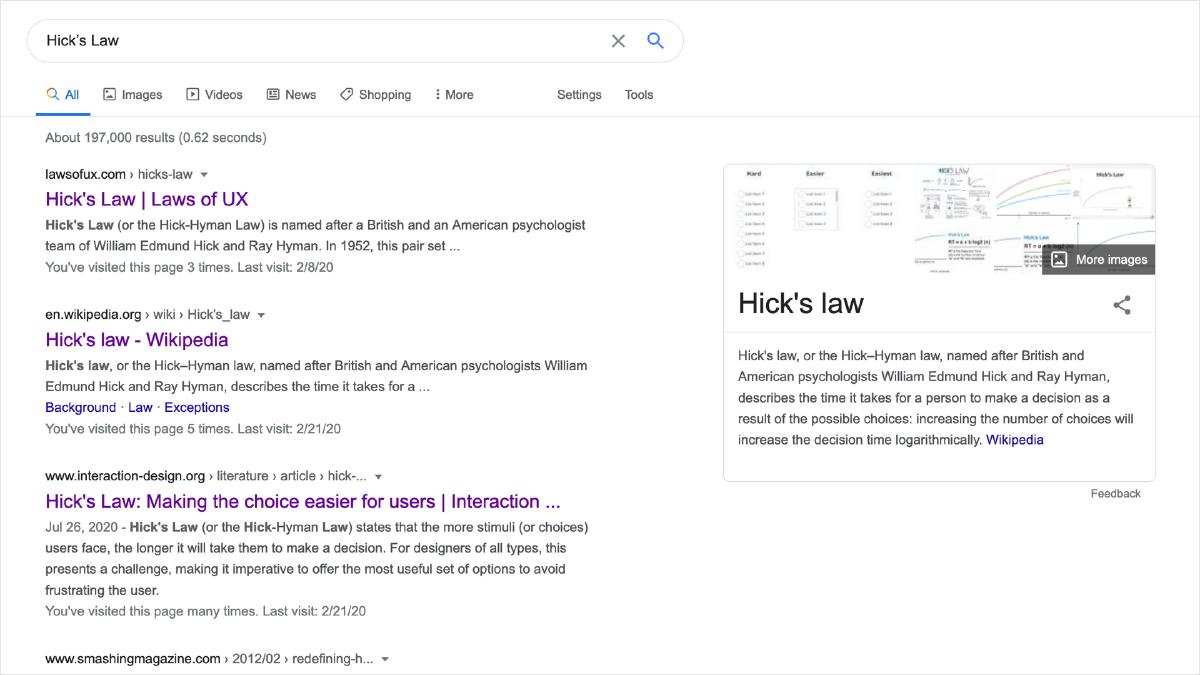Takeaways
- Group functions of a similar nature so they are visually connected via colors, lines, frames, or other shapes.
- Alternately, you can use a tangible connecting reference (line, arrow, etc) from one element to the next to also create a visual connection.
- Use uniform connectedness to show context or to emphasize the relationship between similar items.
Examples

Google Search Results
The Law of Uniform Connectedness can be seen within Google’s search results with borders that surrounds specific items such as videos and ‘featured snippets’. This border helps to visually connect the content and also separate it from other results by giving it a bit more priority.
Origins
The principles of grouping (or Gestalt laws of grouping) are a set of principles in psychology, first proposed by Gestalt psychologists to account for the observation that humans naturally perceive objects as organized patterns and objects, a principle known as Prägnanz. Gestalt psychologists argued that these principles exist because the mind has an innate disposition to perceive patterns in the stimulus based on certain rules. These principles are organized into five categories: Proximity, Similarity, Continuity, Closure, and Connectedness.